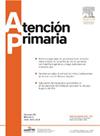我们怎样才能增加患有纤维肌痛的女性坚持步行运动?
IF 1.8
4区 医学
Q2 MEDICINE, GENERAL & INTERNAL
引用次数: 0
摘要
目的:本研究旨在确定纤维肌痛女性在临床建立的模式下行走表现的关键信念,区分高强度与低强度以及高强度与低强度的差异。设计纵向前瞻性研究,在两个时间点(T1和T2)进行测量,间隔7周。阿利坎特和马德里纤维肌痛的地理联系。参与者在T1中,275名诊断为纤维肌痛的成年女性参加了协会,并且没有在临床建立的模式下进行步行锻炼。在T2时,219名女性完成了随访。通过问卷调查,我们评估了行为信念、规范信念和控制信念的强弱与参与者参与步行运动的意向(T1)和实际表现(T2)的关系。结果高、低意愿者在8项行为信念的中位数强度上存在显著差异(秩:U = 4389.0, p≤0.001;U = 2356.5, p≤0.05)和1个促进者控制信念(U = 4211.5, p≤0.001)。在一项抑制剂控制信念上,高绩效与低绩效之间存在显著差异(t = 2.6, p≤0.01)。结论增强步行运动的动力,应有针对性地培养8种具体的行为信念。然而,对于女性来说,开始并保持坚持,需要减少抑制信念的力量。本研究为初级卫生专业人员促进纤维肌痛妇女的步行运动提供了目标。本文章由计算机程序翻译,如有差异,请以英文原文为准。
How can we increase walking exercise adherence in women with fibromyalgia?
Aim
This study aimed to identify the key beliefs underlying the performance of walking under a clinically established pattern in women with fibromyalgia, distinguishing between those held by high vs. low intenders and high vs. low performers.
Design
Longitudinal prospective study with measures taken at two time points (T1 and T2) over a seven-week interval.
Location
Associations of fibromyalgia of Alicante and Madrid.
Participants
At T1, 275 adult women with fibromyalgia diagnosis attending associations and that did not perform the walking exercise under the clinically established pattern. At T2, 219 women completing the follow-up.
Main measures
With questionnaires, we assessed the strength of the behavioral, normative and control beliefs in relation to participants intention to engage in walking exercise (T1) and their actual performance (T2).
Results
Among high and low intenders of performing the walking exercise, significant differences were found regarding the median strength of eight behavioral beliefs (rank: U = 4389.0, p ≤ .001; U = 2356.5, p ≤ .05) and one facilitator control belief (U = 4211.5, p ≤ .001). Significant differences among high and low performers were found regarding one inhibitor control belief (t = 2.6, p ≤ .01).
Conclusion
To enhance motivation for walking exercise, eight specific behavioral beliefs should be targeted. However, for women to initiate and maintain adherence, reducing the strength of an inhibiting belief is required. This study provides the targets for primary health professionals to promote the walking exercise among women with fibromyalgia.
求助全文
通过发布文献求助,成功后即可免费获取论文全文。
去求助
来源期刊

Atencion Primaria
医学-医学:内科
CiteScore
2.90
自引率
8.00%
发文量
156
审稿时长
33 days
期刊介绍:
Atención Primaria es una revista que publica trabajos de investigación relativos al ámbito de la atención primaria de salud. Desde el punto de vista conceptual, Atención Primaria asume el nuevo modelo de atención primaria de salud, orientado no sólo a la curación de la enfermedad, sino también a su prevención y a la promoción de la salud, tanto en el plano individual como en el de la familia y la comunidad. En estos nuevos aspectos que definen el modelo de atención primaria de salud es en los que se centran los trabajos de investigación que publica Atención Primaria, la primera revista de originales española creada para recoger y difundir la producción científica realizada desde los centros de atención primaria de salud sobre cuestiones como protocolización de la asistencia, programas de prevención, seguimiento y control de pacientes crónicos, organización y gestión de la asistencia primaria, entre otros.
 求助内容:
求助内容: 应助结果提醒方式:
应助结果提醒方式:


